A pneumatic system uses pressurised air to transmit energy. For this chick and egg craft I used two syringes. The system starts with the syringe inside the box in the closed position ( syringe fully down ) and with the syringe outside the box in the open position ( syringe fully open ). When the syringe outside the box is pushed down air is forced through the tubing and into the second syringe pushing the plunger upwards opening the box. This pneumatics project is a great Easter STEM Challenge!
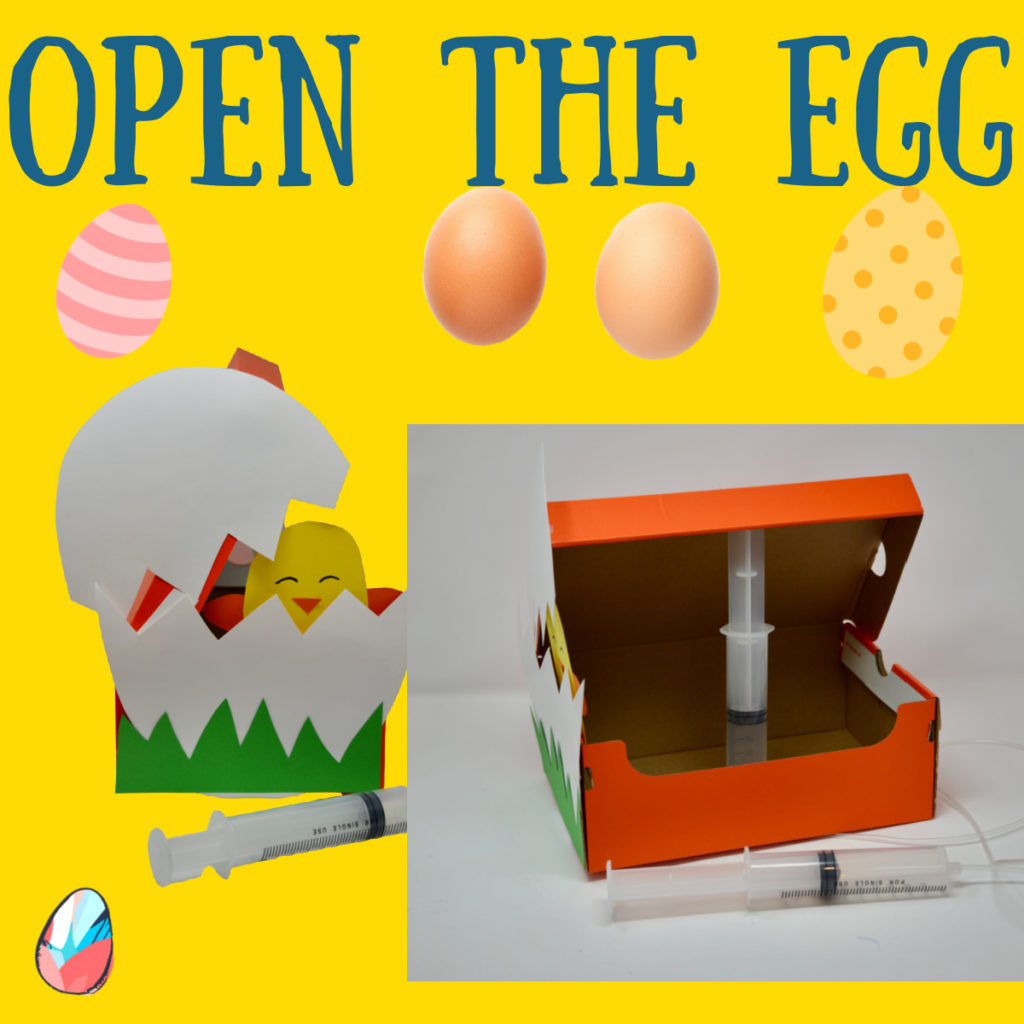
It’s a really simple mechanism that can be used for lots of crafts and activities.
We made this moving K’nex crane in the same way a few years ago.
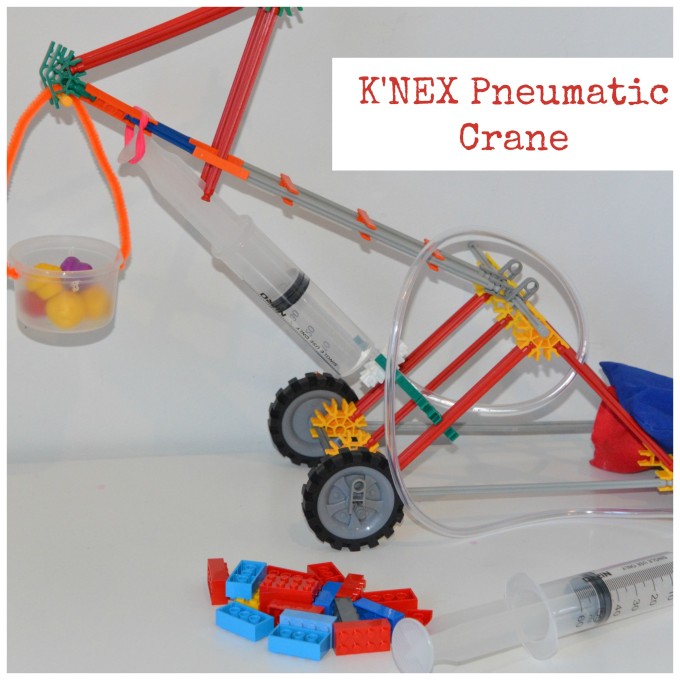
Examples of pneumatics
Examples of pneumatics used in everyday life are:
Pneumatic drills like you see on the side of the road during roadworks.
Air brakes on vehicles.
Why use pneumatics
Air is light.
Pneumatic systems are usually safe as there are no sparks from electricity. This makes them great for use in areas where a spark could cause an explosion, such as a mine.
If there is any leakage, it’s not messy.
Pneumatic systems can usually absorb shock as air is compressible.
Pneumatics Project – Chick and Egg
You’ll need:
A shoe box with a hinged lid
Two syringes and plastic tubing
Cardboard/cardstock or thick paper – white, yellow and orange
Scissors
Tape
How to make an opening chick egg
Cut out a large egg shape that is big enough to cover the side of your shoe box.
Work out where you want the egg to open and cut a zig zap line the whole way across.
Use tape to attach the top of the egg to the shoe box lid ( on the side ) and the bottom to the main part of the box.
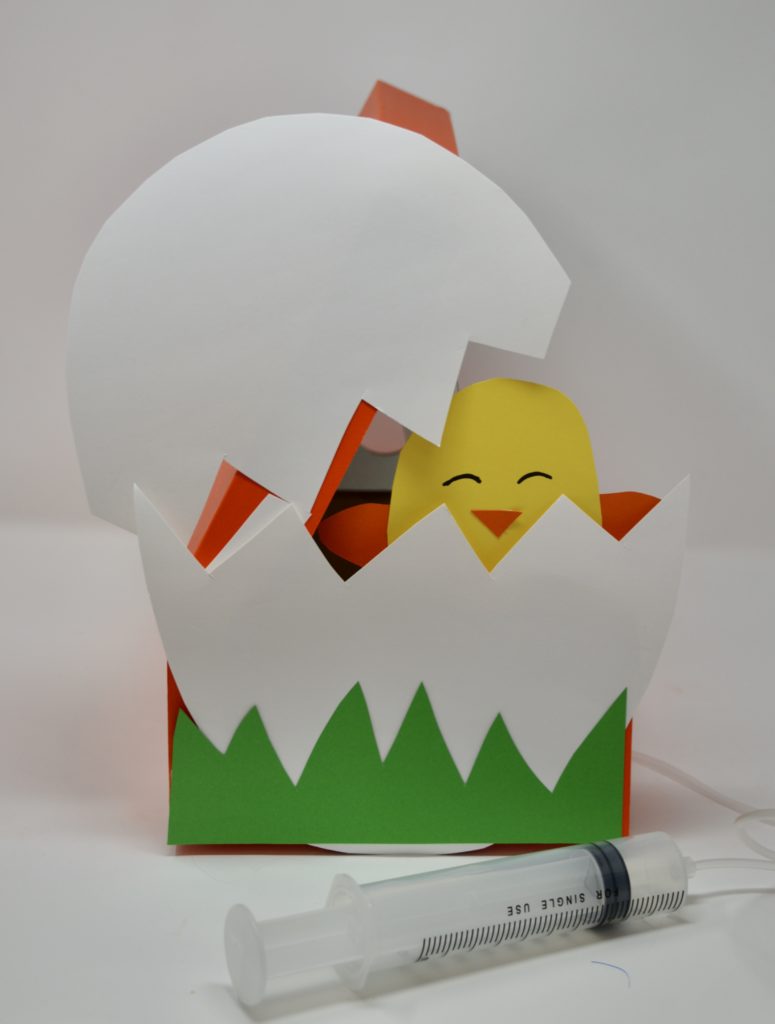
Cut out a chick shape and attach him to the inside of the box.
Carefully poke a hole in the bottom of the shoebox and thread one end of the tubing through to the inside of the box.
Attach a syringe to the end and use tape to attach the top of the syringe to the inside lid of the box.
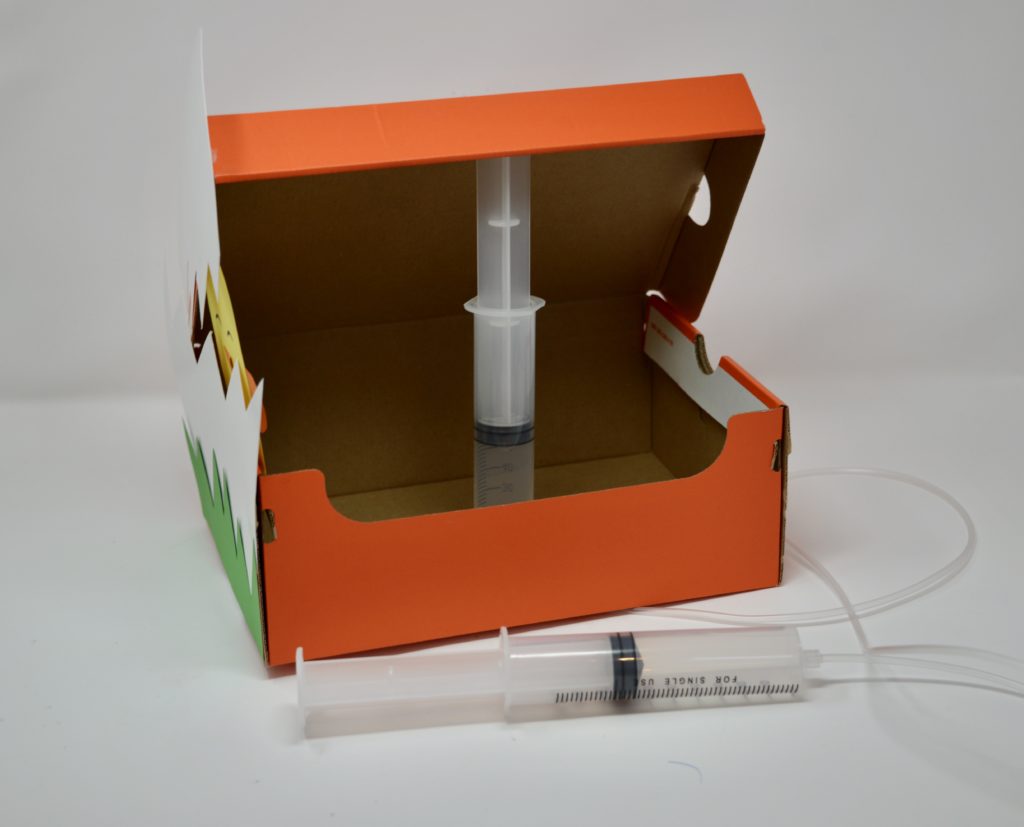
Test your system!
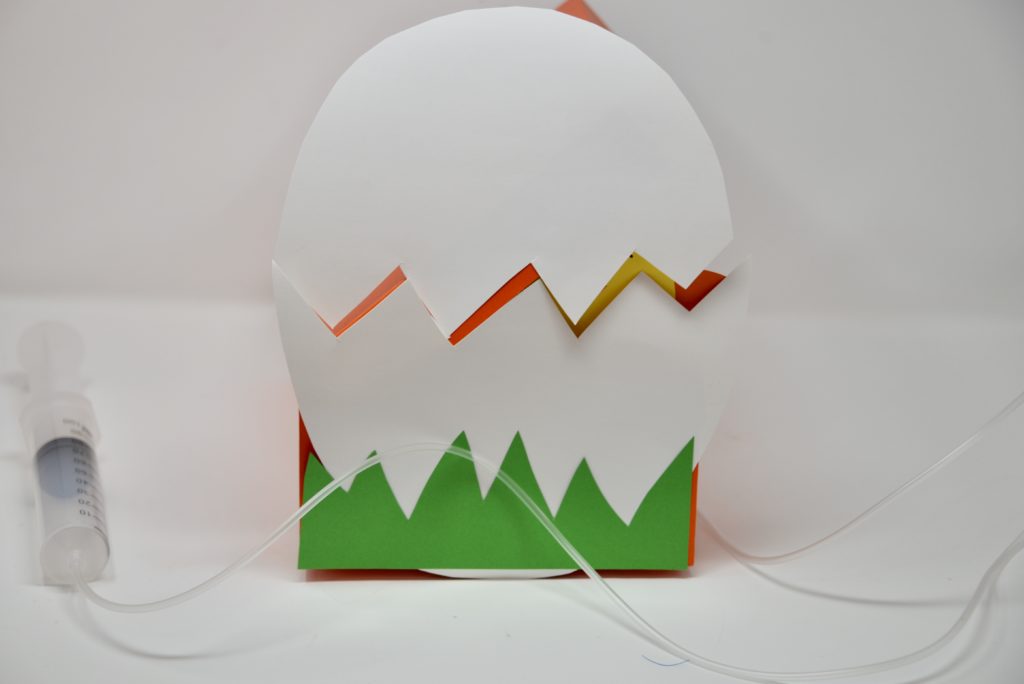
How does it work?
The air inside the first syringe is forced through the tubing and into the second syringe with enough energy to push the syringe in the box upwards.
Pneumatics and Hydraulics
Pneumatics use gases that are easily compressed, such as air, while hydraulics use liquids that are harder to compress.
There are huge amounts of energy in moving air and moving water.
Moving air is used to create electricity by windmills and moving water is used in hydroelectric power stations to make electricity.
The power of tides and waves are also potential sources of energy and are more reliable than the sun and wind.
More Easter STEM Ideas
Try one of my FREE Easter STEM Challenges. The chain reaction is my favourite!
This toothpick structure challenge is great fun, too!
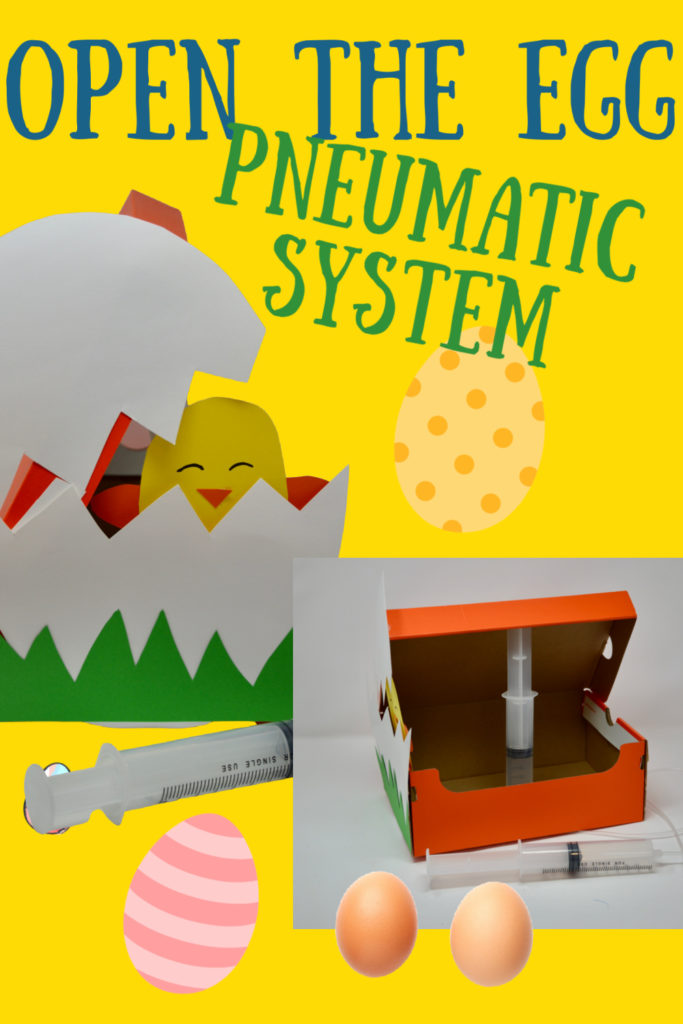
Last Updated on March 22, 2024 by Emma Vanstone

Leave a Reply